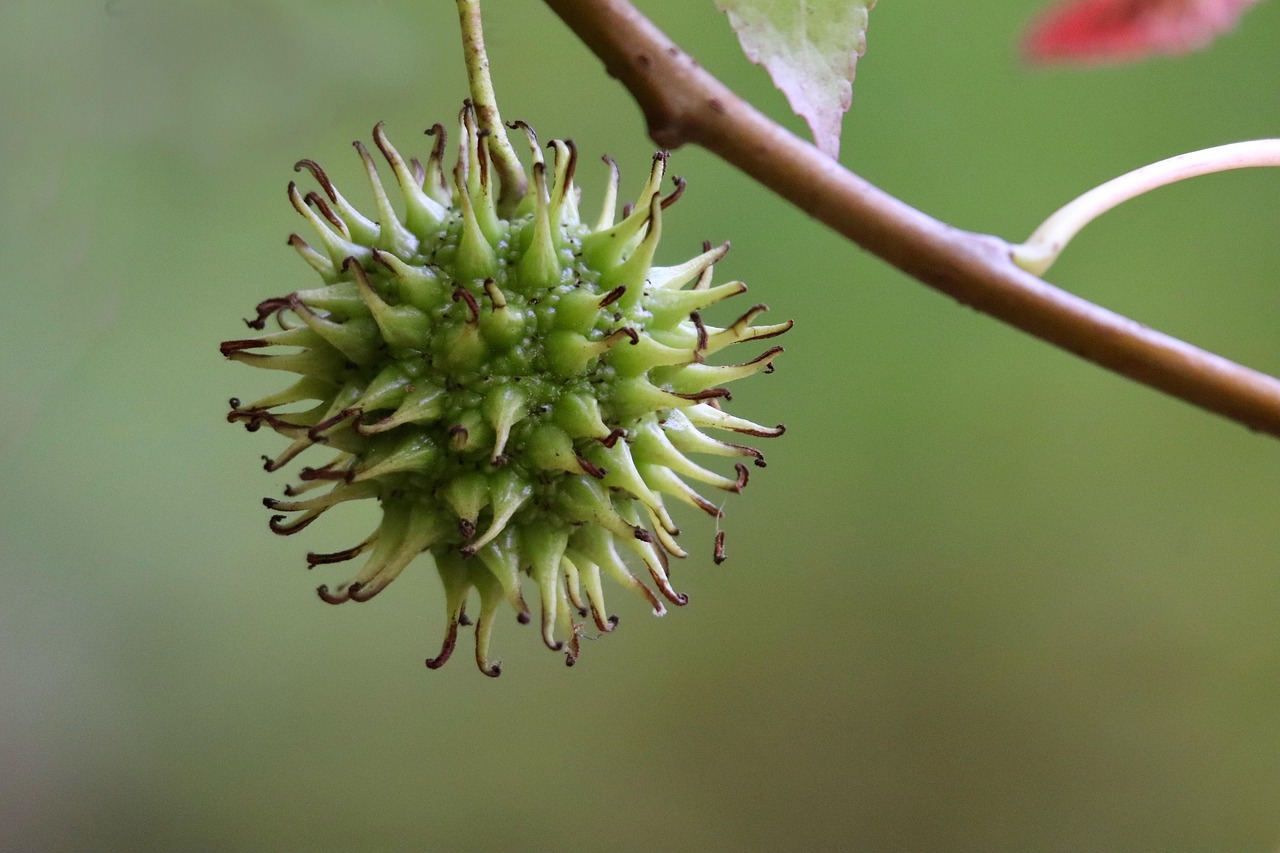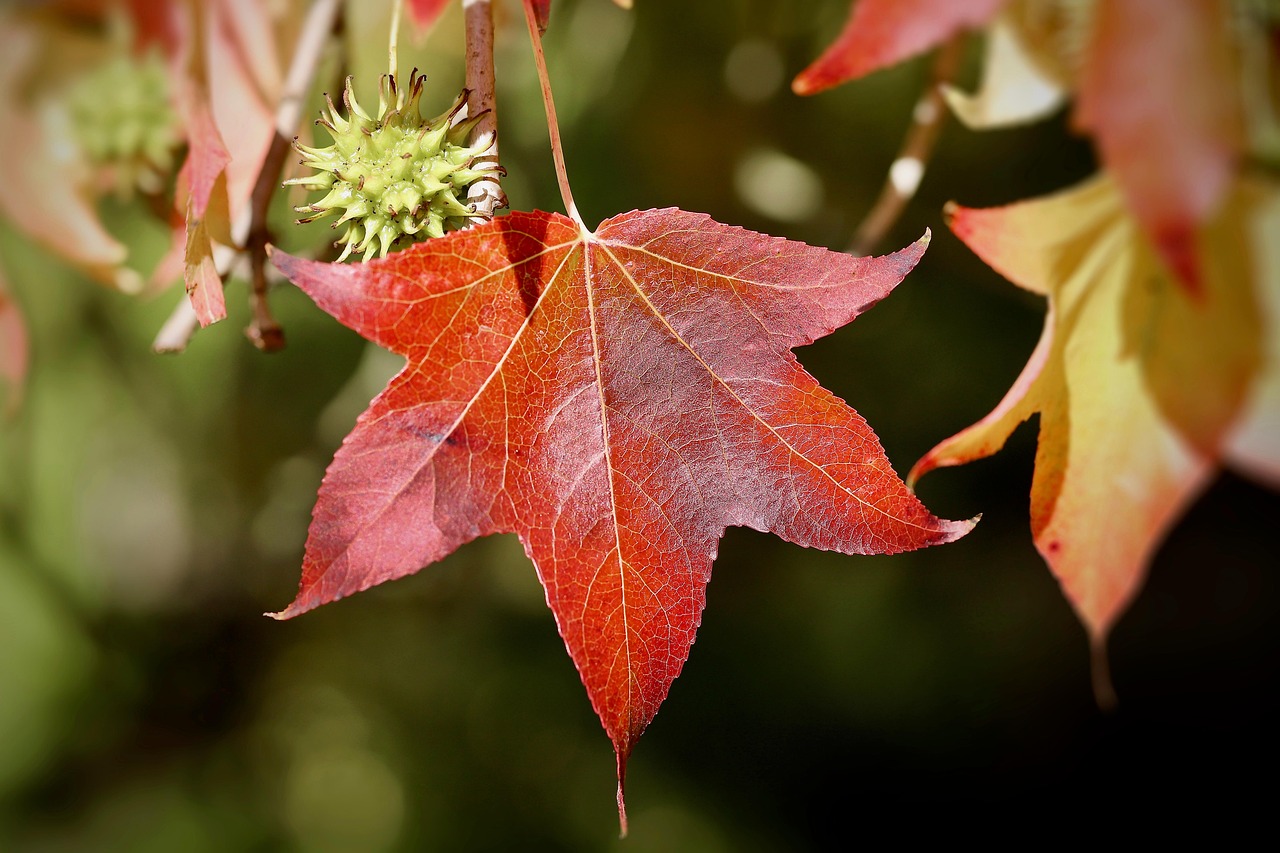To effectively remove sweetgum balls from your property, consider using a combination of manual collection, lawn maintenance tools, and specialized equipment. Regular raking, applying mulch, and employing a vacuum or blower can significantly reduce the number of sweetgum balls on your lawn.
Understanding Sweetgum Balls

Sweetgum balls are the spiky seed pods produced by the Liquidambar styraciflua tree, commonly known as the sweetgum tree. These trees are widely appreciated for their beautiful fall foliage and unique star-shaped leaves. However, their seed pods can create a nuisance on residential properties. The pods typically fall in the late summer and autumn months, covering lawns, driveways, and gardens.
The sweetgum ball is not only unsightly but can also be hazardous. They can be slippery when wet and pose a risk for injuries if someone slips on them. Additionally, they can be a breeding ground for pests. Understanding how to manage these seed pods is crucial for maintaining an attractive and safe outdoor space.
Characteristics of Sweetgum Balls
Sweetgum balls are about 1 to 2 inches in diameter and are covered in sharp, spiky protrusions. They start as green pods and turn brown as they mature. Once they fall from the tree, they can scatter across large areas, making collection a challenge. Here are some key characteristics:
| Characteristic | Description |
|---|---|
| Size | 1 to 2 inches in diameter |
| Color | Green when immature, brown when mature |
| Shape | Round with spiky protrusions |
| Falling Season | Late summer to autumn |
Common Challenges with Sweetgum Balls
Homeowners often face several challenges when dealing with sweetgum balls. The sheer number of pods can make removal overwhelming. Additionally, their spiky nature can make them difficult to handle without proper tools. Here are some common challenges:
- Time-consuming manual collection
- Risk of slipping on the pods
- Pest attraction if left unattended
- Damage to lawn equipment due to debris
Effective Removal Techniques
To tackle the issue of sweetgum balls effectively, various methods can be employed. Some homeowners prefer manual methods, while others opt for mechanical assistance. Here are some techniques that can help:
- Manual Raking: Use a rake to gather sweetgum balls. This method is effective but may require regular upkeep.
- Lawn Mower: Some mowers can chop up sweetgum balls when set at the right height, reducing their presence.
- Vacuum or Blower: Specialized yard vacuums or blowers can quickly collect these pods, saving time and effort.
By understanding sweetgum balls and implementing effective removal techniques, you can keep your property safe and visually appealing. Regular maintenance is key to preventing the accumulation of these troublesome seed pods.
Preventive Measures for Sweetgum Ball Accumulation
While removal techniques are essential, prevention is equally crucial in managing sweetgum balls. By taking proactive steps, homeowners can significantly reduce the number of sweetgum balls that accumulate on their properties. Here are some effective preventive measures:
Choosing the Right Tree Species
If you’re considering planting trees in your yard, think carefully about your choices. Sweetgum trees are known for their beautiful foliage but can be problematic due to their seed pods. Here are some alternatives:
- Red Maple: Offers vibrant fall colors without the nuisance of seed pods.
- Oak: A sturdy choice with acorns instead of pods, which may be easier to manage.
- Dogwood: A smaller tree with beautiful blooms and no spiky seed pods.
Regular Lawn Maintenance
Maintaining a healthy lawn can discourage the spread of sweetgum balls. Regular upkeep can help keep your property looking its best while minimizing pod accumulation. Consider the following tips:
- Consistent Mowing: Keep your grass trimmed to an appropriate height to avoid creating a habitat for fallen pods.
- Fertilization: Applying fertilizer can promote a lush lawn, which may help prevent sweetgum trees from dropping as many pods.
- Mulching: Use mulch around flower beds and trees to cushion falling pods and make cleanup easier.
Utilizing Tools for Effective Collection
Having the right tools can make a significant difference in managing sweetgum balls on your property. Here are some recommended tools that can help streamline the collection process:
Lawn Sweepers
Lawn sweepers are excellent for collecting debris like leaves and sweetgum balls. They attach to lawn tractors or can be pushed manually. Here’s how they work:
- Efficiency: Lawn sweepers can cover large areas quickly, making them ideal for larger properties.
- Adjustable Height: Most models allow you to adjust the height, ensuring that they catch sweetgum balls without damaging your lawn.
- Easy Disposal: Collected debris can be easily dumped into compost bins or yard waste bags.
Handheld Vacuum Cleaners
If you have a smaller yard or specific areas where sweetgum balls accumulate, a handheld vacuum cleaner designed for outdoor use may be ideal. Benefits include:
- Portability: These vacuums are lightweight and easy to maneuver around flower beds and pathways.
- Versatility: Many models can also handle leaves and other small debris, making them a multi-use tool.
- Less Noise: Handheld vacuums operate more quietly compared to larger equipment, making them suitable for residential areas.
Community and Collaboration
In neighborhoods with numerous sweetgum trees, collaboration can prove beneficial. By working together with neighbors, homeowners can share resources and strategies for managing sweetgum balls more effectively. Here are some ideas for community engagement:
- Organize Cleanup Days: Set specific days where neighbors come together to clean up their yards, making the task less daunting.
- Share Equipment: Pool resources to invest in larger equipment like lawn sweepers or mulchers that can be shared among several households.
- Educational Workshops: Host workshops on tree maintenance and lawn care to elevate community awareness about managing sweetgum trees.
By implementing preventive measures and utilizing effective tools, homeowners can significantly lessen the burden of sweetgum balls on their properties. Combining these efforts with community collaboration enhances the overall effectiveness of managing this natural challenge.

Environmental Impact of Sweetgum Balls
Sweetgum balls, while often considered a nuisance, also play a role in the ecosystem. Understanding their environmental impact can help homeowners appreciate the natural processes at work. Here are some aspects to consider:
Seed Dispersal
Each sweetgum ball contains numerous seeds. When these pods break open, they release seeds that can contribute to the growth of new trees. This natural process supports local wildlife and biodiversity. The seeds can attract various birds and small mammals, which feed on them.
Habitat for Wildlife
While sweetgum balls may clutter yards, they can provide habitat for certain creatures. Here are a few examples:
- Birds: Various bird species may use the seeds as a food source.
- Small Mammals: Animals like squirrels and chipmunks may forage for fallen seeds.
- Insects: Some insects may find shelter among the fallen pods, contributing to the ecosystem.
Health and Safety Considerations
<
p>When managing sweetgum balls, it is essential to consider health and safety issues associated with their removal. Homeowners should be aware of potential hazards that come with handling these spiky seed pods.
Slip and Fall Hazards
Sweetgum balls can create slippery surfaces, especially when wet. Homeowners should take precautions to prevent accidents:
- Wear Appropriate Footwear: Use shoes with good traction when walking in areas where sweetgum balls accumulate.
- Mark Hazardous Areas: If certain spots are particularly hazardous, consider marking them with cones or flags.
- Regular Cleanup: Consistent removal of sweetgum balls can greatly reduce the risk of slips and falls.
Pest Management
Leaving sweetgum balls unattended may also attract pests. Here are some common pests associated with sweetgum trees:
- Aphids: These insects feed on tree sap and can weaken the tree.
- Scale Insects: They may infest sweetgum trees and contribute to decline.
- Ants: Ants often farm aphids for their honeydew, creating a mutually beneficial relationship.
To manage pests effectively, consider these strategies:
- Regular Inspection: Check your trees regularly for signs of pest infestations.
- Natural Predators: Encourage beneficial insects like ladybugs that prey on aphids.
- Avoid Chemical Pesticides: Use organic methods whenever possible to protect the environment.
Alternative Uses for Sweetgum Balls
Instead of viewing sweetgum balls solely as a nuisance, consider their alternative uses. They can be repurposed creatively, contributing to sustainable practices:
Crafting Materials
Sweetgum balls can be used in various crafts. Here are some ideas for creative projects:
- Decorative Arrangements: Incorporate them into floral arrangements or seasonal decorations.
- Nature Crafts: Use sweetgum balls in art projects with children or for DIY home decor.
- Gift Wrapping: Use them as natural embellishments on gift packages.
Mulching and Composting
If you have a compost pile, sweetgum balls can be added as a carbon source. However, they break down slowly, so they should be mixed well with nitrogen-rich materials. Additionally, they can be used as mulch in garden beds:
- Soil Improvement: As they decompose, sweetgum balls enrich the soil.
- Pest Deterrent: The spiky nature of the balls can deter some pests from entering garden beds.
By exploring alternative uses for sweetgum balls, homeowners can reduce waste while enhancing their gardens and creative projects.
Adapting Your Landscape for Long-Term Management
In addition to immediate removal and preventive measures, homeowners can adapt their landscape to minimize the impact of sweetgum balls in the long term. This approach can enhance the overall beauty of your property while reducing the workload associated with maintenance. Here are some strategies to consider:
Planting Ground Covers
Ground covers can help suppress sweetgum ball accumulation. By filling empty spaces in your yard, they can create a lush environment that makes it harder for sweetgum balls to settle on bare soil. Consider these options:
- Creeping Thyme: This fragrant plant is drought-tolerant and spreads quickly.
- Ajuga (Bugleweed): Known for its attractive foliage and flowers, ajuga grows well in various conditions.
- Vinca Minor: Also known as periwinkle, this hardy plant offers evergreen coverage.
Creating Defined Edges
Defining the edges of your garden beds and lawn can help contain sweetgum balls. Using materials like stone, mulch, or timber can create barriers that keep pods from spreading throughout your yard. Here are some benefits of defined edges:
- Aesthetic Appeal: Defined edges can enhance landscaping, giving it a polished look.
- Easy Cleanup: Barriers make it easier to collect fallen sweetgum balls and other debris.
- Prevention of Erosion: Proper edging helps prevent soil erosion, which can occur from wind and water runoff.
Community Resources for Management
<
p>Leveraging community resources can also be beneficial in managing sweetgum balls. Local gardening clubs, environmental organizations, or extension services often provide valuable information and support. Here are some ways to connect:
- Workshops and Seminars: Attend local workshops that focus on tree care and landscape management.
- Online Forums: Join community groups or forums where homeowners discuss gardening challenges and solutions.
- Local Government Resources: Check with local municipalities for programs related to tree management or yard waste disposal.
Final Thoughts
Sweetgum balls can present a unique challenge for homeowners, but understanding their ecological role, preventive measures, and effective removal techniques can significantly ease their impact. By adapting your landscape, utilizing community resources, and considering alternative uses for these seed pods, you can create a more manageable environment.
The key is to engage in regular maintenance and proactive strategies that not only address the current issues but also prevent future accumulation. Whether you choose manual removal methods or invest in specialized equipment, staying informed about best practices will help you keep your property safe and beautiful.
Ultimately, by balancing the natural beauty of sweetgum trees with practical management techniques, homeowners can enjoy their landscapes without the hassle of excessive sweetgum balls. Embracing both the challenges and benefits of these trees can lead to a more fulfilling relationship with your outdoor space.
